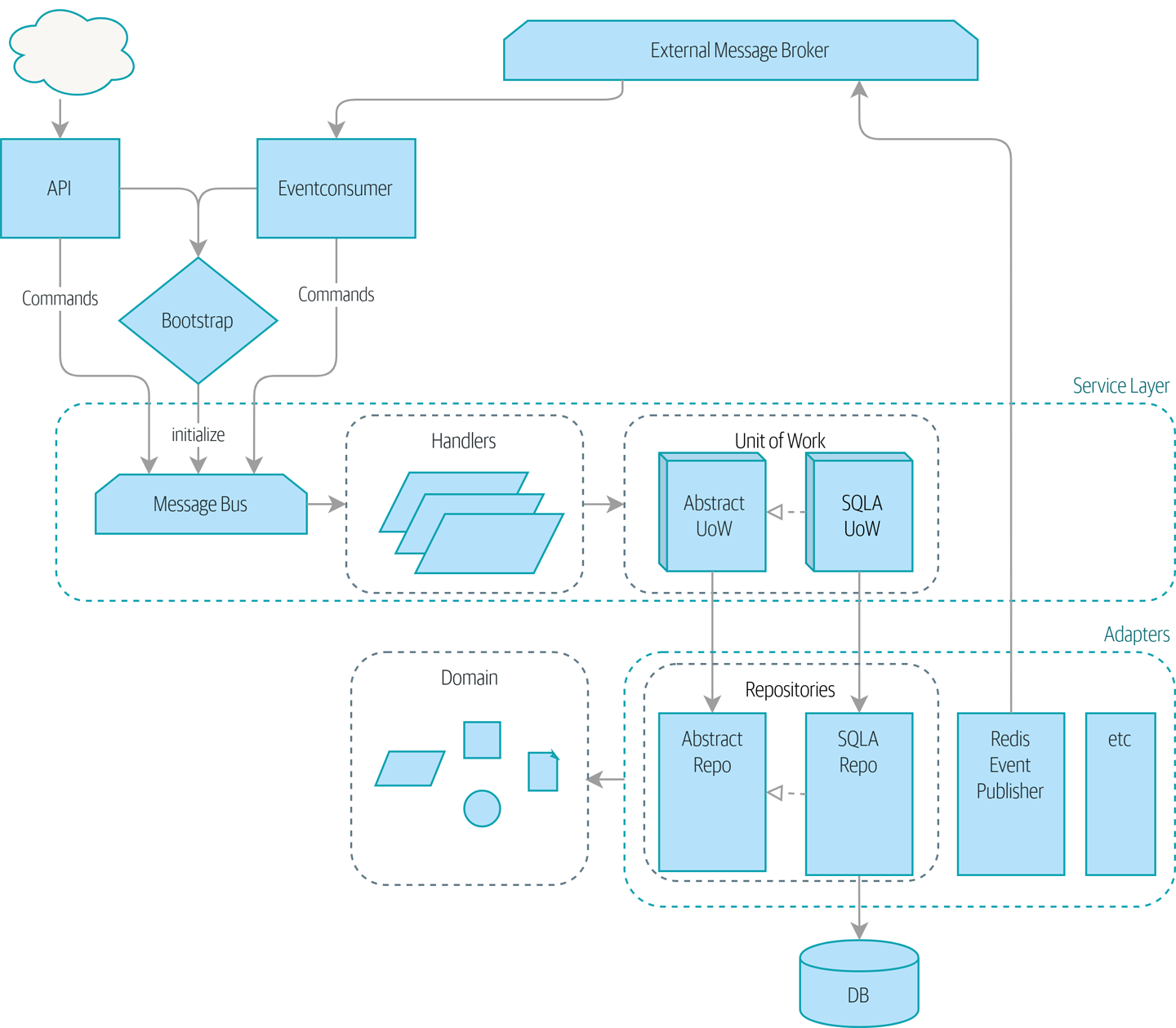Appendix A: Summary Diagram and Table
Here’s what our architecture looks like by the end of the book:

The components of our architecture and what they all do recaps each pattern and what it does.
| Layer | Component | Description |
|---|---|---|
Domain Defines the business logic. |
Entity |
A domain object whose attributes may change but that has a recognizable identity over time. |
Value object |
An immutable domain object whose attributes entirely define it. It is fungible with other identical objects. |
|
Aggregate |
Cluster of associated objects that we treat as a unit for the purpose of data changes. Defines and enforces a consistency boundary. |
|
Event |
Represents something that happened. |
|
Command |
Represents a job the system should perform. |
|
Service Layer Defines the jobs the system should perform and orchestrates different components. |
Handler |
Receives a command or an event and performs what needs to happen. |
Unit of work |
Abstraction around data integrity. Each unit of work represents an atomic update. Makes repositories available. Tracks new events on retrieved aggregates. |
|
Message bus (internal) |
Handles commands and events by routing them to the appropriate handler. |
|
Adapters (Secondary) Concrete implementations of an interface that goes from our system to the outside world (I/O). |
Repository |
Abstraction around persistent storage. Each aggregate has its own repository. |
Event publisher |
Pushes events onto the external message bus. |
|
Entrypoints (Primary adapters) Translate external inputs into calls into the service layer. |
Web |
Receives web requests and translates them into commands, passing them to the internal message bus. |
Event consumer |
Reads events from the external message bus and translates them into commands, passing them to the internal message bus. |
|
N/A |
External message bus (message broker) |
A piece of infrastructure that different services use to intercommunicate, via events. |
